Hyvinkää 作者: 来源: 发布时间:2021-10-14
一、所属省或是州,具体位置,人口,面积
Hyvinkää is a town and municipality of Finland. It is located in the province of Uusimaa. approximately 50 kilometres (30 mi) north of the capital Helsinki. The town was chartered in 1960. The population of Hyvinkää is 46,537 (31 January 2019). Highways and rail connections make it one of the suburban commuter centers of Greater Helsinki. The city planning has had an emphasis on recreational facilities.
Some of the more well-known buildings in Hyvinkää are, among others, the Church (1961, Aarno Ruusuvuori) of Hyvinkää and the manor house of Kytäjä. The Finnish Railway Museum is located in Hyvinkää. Hyvinkää is also home to Konecranes, which specializes in the manufacture and service of cranes, and KONE Elevators, the world's third-largest elevator company who manufacture, install and service elevators and escalators.
The workshop of Ruokangas Guitars, the leading Finnish electric guitar maker, was located at Wanha Villatehdas, Hyvinkää until 2011. Hyvinkää is known among Scandinavian golf enthusiasts due to Kytäjä golf, located at the countryside of Hyvinkää. It offers two courses designed by Tom McBroom: South East Course opened in August 2003, and North West Course in August 2004.
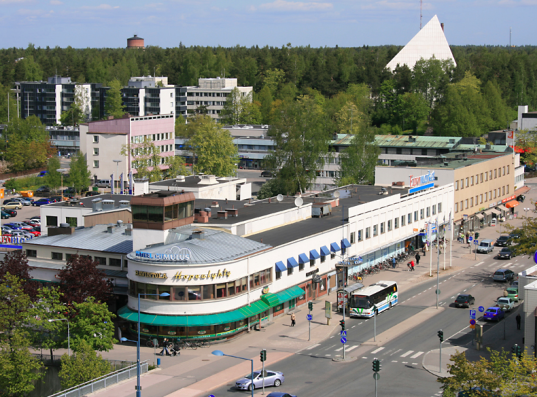
https://www.hyvinkaa.fi
二、自然地理
1.地理条件
A giant grave in Suomieh in the southern part of the municipality Hyvinkää is located in the province of Uusimaa. Its neighboring municipalities are Riihimäki and Hausjärvi in the north, Mäntsälä in the east, Tuusula and Nurmijärvi in the south, and Vihti and Loppi in the west. The bedrock of Hyvinkää is an old, evenly worn bedrock. In the south-northeast direction, a wide zone of reddish granite runs through the municipality. There are widespread volcanic rock types on both sides of the zone. In the Kytjä and Usmi area, up to the east of Erkylä, the bedrock is gabbro. This area has steep cliffs with marshy lakes and waterfalls in between.
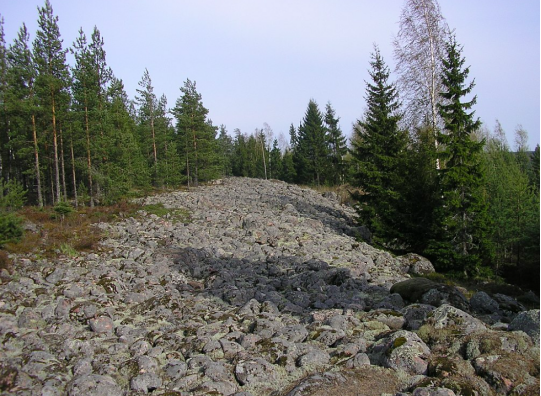
The city's settlement is concentrated on the southwest-northeast Salpausselä ridge. There are north-south ridges on the Swiss Slope and Giant Lock. The sea has softened the southeastern edge of the ridge, but the northwestern side, the current area of the Swiss ridge, remained steep. The storms of the Baltic ice lake consumed the land away from the highest cliffs and that is why the cliffs of Usm are still exposed today. About 9,500 years ago, loam and clay plains formed in the southern and southeastern parts of present-day Hyvinkää, on which the first fields of the locality were later cleared.
Hyvinkää has six lakes larger than one hundred hectares: Hirvijärvi, Suolijärvi, Kytäjärvi, Sykäri, Ridasjärvi and Sääksjärvi. There are 49 lakes and ponds with a size of more than 0.10 hectares but less than 50 hectares. Especially in the Usmi and Kytjä regions, most of them are surrounded by marshes and their water is brown. The shores of the ponds in the area are mostly undeveloped and there is no road to them. The shores of the largest ponds, Jauholammi, Urolammi and Usminjärvi, are inhabited. Lake Usminjärvi has a city beach. There are several natural ponds in the catchment areas of Hirvijärvi, Kytäjärvi and Suolijärvi. Although their water quality is mostly good, the water is often very brown. The exception is Valkealammi, which has a visibility of three meters. There are course and camp centers and a lot of leisure settlements on the shores of Lake Märkiö and Vihtilammi in the Sääksjärvi area.
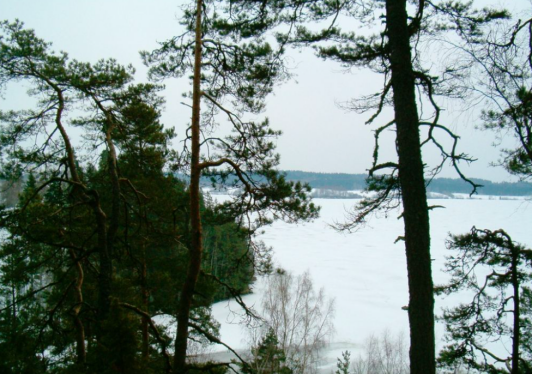
The Vantaanjoki River flows in a north-south direction through Hyvinkää for about 20 kilometers. In Hyvinkäänkylä, it runs through the Salpausselä ridge. The longest tributary of the Vantaanjoki River, Keravanjoki, starts from Lake Ridasjärvi. It runs ten kilometers from north to south in Itä-Hyvinkää. The twelve-kilometer-long Kytäjoki River, which flows from Lake Kytäjärvi to the Vantaa River, doubles the flow in Vantaa. The Keihäsjoki River starts at Lopen Keihäsjärvi, in its middle stages is Kurkisuo and it flows into the middle of the Kytäjoki river. The Keihäs and Kytäjoki rivers flood almost every year. There are no large natural streams in Hyvinkää. The streams in the area are mostly lake inlets and outlets, which usually run along the edge of the field and are gutted. Especially in the Kytjä region, many creeks are forested. The Hyvinkää creeks include the Paalijoki, which flows into the Vantaanjoki River in Hyyppärä, the Kurkioja and Lepänoja in Kurkisuo, the Aulinjoki, Panninjoki and Parikkaanoja, which flow into Ridasjärvi, Välioja, which flows into Suolijärvi, and the Tojula.
Most of Hyvinkää's springs are no longer in their natural state. They have mainly been taken up by wells or dried up due to forest drainage. The groundwater formation area in Hyvinkää is 19 square kilometers. 13,000–19,000 cubic meters of new groundwater are formed per day. There are a total of 24 groundwater areas suitable for water supply or important for water supply, eight of which are shared with neighboring municipalities.
Hyvinkää is part of the Southern Boreal Zone, which is characterized by coniferous blueberry-type forests in Northern Uusimaa. Demanding plant species also grow in the Kyttaja area, as the bedrock is rich in alkaline rock species that are nutritious and rich in calcareous. Due to declining grazing, many keto plants have declined in their traditional habitats, but deer bell, keto roe and ketone clover, among others, have spread to road and railway embankments.
The whole of Ridasjärvi, Järvisuo and Ritassaarensuo is a nationally significant FINIBA bird area. Ridasjärvi is home to a particularly large number of gulls, but it also nests reed warblers, soot chickens, tentacles, willow birds, aspens and oxen. Ridasjärvi is the only nesting site of the little log in Hyvinkää. Hundreds of migratory birds rest on the lake in the spring. The most common are swans, in addition to which dozens of wild geese are often found and some individuals of Canadian, marine and tundra geese. Ritassaari swamp is inhabited mainly by common bird species from southern Finland. Lake Kytäjärvi and its surroundings are also a historically significant bird destination. Waders, seagulls, ducks, geese, swans and soot chickens rest there. According to data from 2010, 59 different bird species have been observed in the Swiss park, the most common of which are willow, finch, red-breasted and squirrel.
https://www.hyvinkaa.fi
2.交通情况
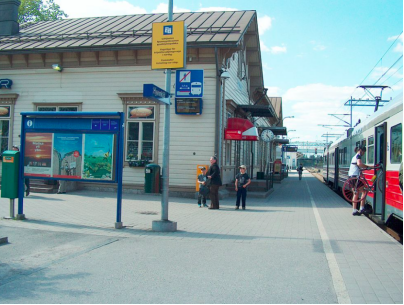
Hyvinkää railway station, the oldest building in the city centre. Hyvinkää is an important railway city, located on the primary rail route in southern Finland. Station building is one of the original Helsinki-Hämeenlinnarailway stations in original use. The city is also home to the Finnish Railway Museum and a VR maintenance area. Hyvinkää also has another railway line, the Hyvinkää-Karis railway towards Hanko (founded on 8 October 1873). Passenger traffic between Hyvinkää and Karis ended in September 1983, but the railway is still in use by VR Cargo. Hyvinkää airfield was the main airport of Finland in 1944–1947, when Helsinki-Malmi Airport was in use by the Allied Commission. Finnair used Hyvinkää as a major hub. Finnair's DC-3-pilots trained to fly at Hyvinkää airfield in 1948. The Local bus service is operated by Hyvinkään Liikenne. There are six local bus lines.
After the Continuation War, Hyvinkää Airport served as the main airport in the country for 1944–1947, when Helsinki-Malmi Airport was used by the Allied Control Commission. International traffic was also flown through it. Finnair's DC-3 pilots were trained in aircraft type at Hyvinkää airport in 1948. Today, the airport has a lively recreational aviation activity, including gliding and motor flying, for example by the Hyvinkää Aviation Club, founded in 1948, and the Mäntsälä Aviation Club.
https://www.hyvinkaa.fi
三、经济发展和规模
Hyvinkää has a long history as an industrial city and industry is still of great importance to the city compared to the national average. In 2011, 30% of the people of Hinkää were public sector employees and the city employs about 3,000 people. However, more than a quarter (27%) of the men who worked in the city were employed by industry in 2013. The locality has the headquarters and factories of the crane manufacturer Konecranes and the food group Mylly Parha. In addition, Kone's elevator factories established in 1942 and the Isover and Reka Kaapel factories operate in Hyvinkää. Transval, which serves industrial companies, has a significant logistics center in Hyvinkää on the premises of the former Hyvinkää workshop.
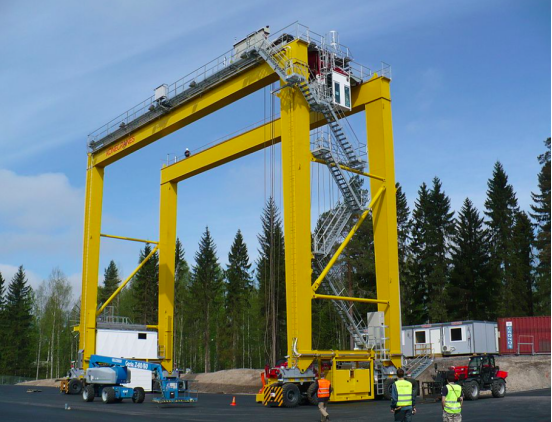
Hyvinkää's job self-sufficiency rate in 2016 was 94.3%, which is the best among the frame municipalities in the Helsinki region. [104] On the other hand, the unemployment rate in Hyvinkää in August 2017 was 9.4%, which is the highest among the municipalities of Central Uusimaa, although lower than in the Helsinki metropolitan area in Helsinki or Vantaa. The economy of the city of Hyvinkää has been in surplus in 2016 and 2017, although it turned into a deficit in 2018. In 2019, the city's decision for the financial year was again EUR 0.5 million positive. The city's economic dependency ratio averaged 1.18 between 2010 and 2012, well above the national average.
In 2012, the Willa shopping center was completed in the center of Hyvinkää. It employs about 700 people. With more than 100 stores, the shopping center is one of the largest in Finland. There are 123 farms in Hyvinkää (2007). There are ten dairy farms and 13 stables. Oats, spring wheat and malting and feed barley are mostly grown in Hyvinkää. The resort has a total of 58 square kilometers of arable land. Due to afforestation and construction, the arable area has decreased by 800 hectares in twenty years. Hyvinkää has 16 soil extraction areas. Their area is 280 hectares. The importance of rock excavation and crushing has increased in recent years, but excavation volumes have declined. The usable sand and gravel resources have mostly already been exploited. The largest soil extraction areas are in Astrakani and Suomieh.
https://www.hyvinkaa.fi
四、产业特点/重点项目
Hyvinkää is a city that grew strongly and was built after the Second World War due to the attraction of the Helsinki metropolitan area. Hyvinkäänkylä, now located four kilometers southwest of the city center, is the oldest inhabited village in the city and was first mentioned in documents in 1495. As the future city grew, the working-class agglomeration first grew around railway stations and wool mills in Vieremä and Mustamännistö., Viertola and Puolimatka, where relatively little old building stock has survived. In the decades after the wars, the districts of Sahanmäki, Kruununpuisto, Rääkänpää and largely Parantola have been built, in the 1960s the uniform apartment building area of Kirjavatolpa, the Paavola Vehkoja, Hakala in the 1980s, Martti in the 1990s, Tapainlinna, Tanssikallio and Kruunumaa in the 2000s and Metsäkalteva in the 2010s, which included the Kravunharju housing fair in 2013. A significant district to be built in the future and already zoned is the Hangonsilta, which is located in the immediate vicinity of the railway station between the Hyvinkää – Hanko line and the Western connections.
Perhaps the most notable building is the new church, one of the most significant modernist churches in the country , with a characteristic pyramidal character in the cityscape. The oldest building in the municipality is the main building of the Ali-Anttila farm in Hyvinkäänkylä from 1801 and the oldest building in the city center is a railway station from 1862. Significant old wooden buildings include the old church (1896, Yrjö Sadeniemi), the Finnish Railway Museum's Hanko the railway station of the track from 1873 and the building of the cinema Arena from 1914 on Siltakatu. The old building and residential culture of the area is presented by the museumed Vaivero mill in the northern part of the municipality, whose main building dates from 1820.
On the east side of Hämeensilla, which crosses the main line of Finland, on Hämeenkatu is a functionalist commercial building built for Ahjo department store in 1935, which is now mainly used for restaurants and is known for the Silver Lantern restaurant advertisement. On the west side of the track, on Uudenmaankatu, is Hyvinkää Central Square. At the end of the center of Uudenmaankatu, built in the 1950s, there are several commercial buildings built in the 1950s and 1960s.
https://www.hyvinkaa.fi
五、风景名胜,景点( attractions)
1. Hyvinkää Art Museum
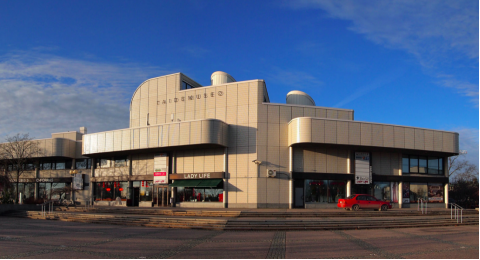
The Hyvinkää Art Museum operates in the Jussintori Business and Art Center and the Hyvinkää City Museum in the buildings of the Wool Factory. In addition, the Finnish Railway Museum is located in Hyvinkää. Among the well-known Finnish visual artists, painters Helene Schjerfbeck, Tyko Sallinen, Jalmari Ruokokoski, Kaapo Wirtanen and Yrjö Saarinen, as well as sculptor Terho Sakki and painter Armas Hursti, have lived and worked in Hyvinkää. There is a music college founded in 1957 in Hyvinkää. Hyvinkää Hall is a city-owned concert and culture hall with about 400 seats, the home hall of the Hyvinkää Orchestra.
The newspaper Aamuposti published by Etelä-Suomen Media is published in Hyvinkää, which is delivered not only in Hyvinkää but also in Riihimäki and is also a local newspaper in Hausjärvi and Lope.
https://www.hyvinkaa.fi
2.Hyvinkää Main Library
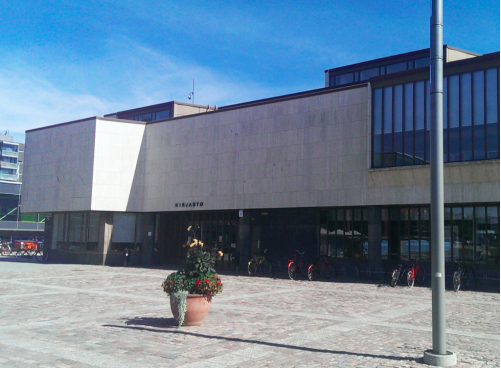
The earliest writers were Marie Linder, the hostess of Kytjä manor, and Aleksanteri Rahkonen, who worked as a teacher at the same manor, published her works in the 1860s. Hyvinkää was a significant place for Mika Waltar and Elina Vaara, writers who emerged from the Fire Carriers. [129] After Helsinki, Waltari wrote the most about Finnish cities in Hyvinkää and Hyvinkää. He lived in Hyvinkää with his mother's suitor in the summer in the 1920s. [130] Danger moved to Hyvinkää in 1968.
Writers who studied in Hyvinkää include Juha Vakkuri, Liisa Mäntymies, Kai Nieminen, Marko Leino, Katja Myllyviita and Sari Vento-Makkonen. Vakkuri lived in Hyvinkää in 1955–1965, Mäntymies lived in Hyvinkää during his childhood and youth, Nieminen lived in Hyvinkää in the Caucasus as a child and Leino was born in Hyvinkää in 1967 and moved away in the late 1980s. Myllyviita and Vento-Makkonen have been involved in the local Youth Power Association. The mill cape was born in Hyvinkää, Vento-Makkonen moved to the locality at the age of 14. Hyvinkää City Library has offices in the city center, Hakala and Paavola.
https://www.hyvinkaa.fi
3. Hypecon 2019 at the Wool Factory
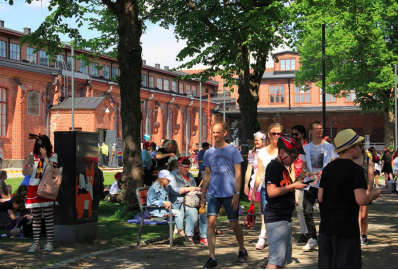
Recurring events in Hyvinkää include the One-Day Story in May organized by the city's cultural services, the national museum week in May, Woodstock's Mill Days in Vaivero and the Hyvinkää Society in June, Ferguson Day, Iron and Petrol until 2012, and the Railway Museum Day organized by the Finnish Railway Museum in August.
https://www.hyvinkaa.fi
六、历史文化
1.历史
In the 16th century there was a tavern in the area now known as Hyvinkäänkylä, which lies approximately halfway between Helsinki and Hämeenlinna. The first tax catalogues also marked the existence of some houses in the area around the same time.
Hyvinkää village gradually grew in the latter half of the 19th century, though it was the construction of the railway network through Finland, beginning in 1861, that marked the starting point for the town's rapid growth. Hyvinkää, who still belonged to the Nurmijärvi parish at that time, resigned in 1917 as its own parishioner.
The construction of Finland's first stretch of railroad, the Helsinki–Hämeenlinna line, determined the location of the present city centre and the railway station of Hyvinkää is one of the few original stations still in use. From Hyvinkää the railway also branches off to the port of Hanko. The Hanko–Hyvinkää Railroad was the first private railroad in Finland, founded in 1862, and acquired by the Finnish State RR Co. in 1875. In the early 20th century, the station village in Hyvinkää was an intermediate stopping point for many emigrants leaving by ship from Hanko for a new life in North America.
The air quality of Hyvinkää was considered healthy due to dense pine forests, and in the 1880s a group of physicians from Helsinki opened a sanatorium for patients seeking rest and recuperation.
Industrialization brought a wool factory to Hyvinkää in 1892 – the Donner family's Hyvinge Yllespinneri. The factory ceased operation in the 1990s, but the red-brick halls still remain. The building has found several new uses, including an exhibition centre and a theater.
Hyvinkää Airfield served as the country's main airport for a short time after the second World War while Helsinki-Malmi Airport was under the control of the Allied Powers. There is now a motorsports centre near the airfield.
Hyvinkää's population grew quickly following the Second World War. It became home to many Finnish Karelian refugees after Karelia was handed out to Soviet Union by the Moscow Peace Treaty. Nowadays Hyvinkää is the sixth biggest town by inhabitants of Uusimaa.
https://www.hyvinkaa.fi
2. 文化体育
There are three health care centers in Hyvinkää. Hyvinkää hospital is one of largest general hospitals in Finland. The emergency unit services 24 hours in day. There are twenty primary schools in Hyvinkää: Anttila school (grades 1–2), Asema school (and the English classes of Hyvinkää), Hakala school, Hyvinkäänkylä school, Hämeenkatu school, Härkävehmas school (grades 3–9), Kaukas school, Kytäjä school, Martti school, Noppo school, Paavola school, Pohjoispuisto school (grades 7–9), Puolimatka school (grades 1–9), Ridasjärvi school, Svenska skolan i Hyvinge (Grades 1–6), Talvisilta school (Grades 1–2), Tapainlinna school (Grades 1–9), Uusikylä school and Vehkoja school (grades 3–9). There are two high schools in Hyvinkää; Hyvinkään yhteiskoulun lukio and Sveitsin lukio.
Hyvinkää has a large variety of sports.Hyvinkään Tahkoplays pesäpallo at men's top league, Superpesis. Hyvinkää Falcons plays american football in nation's second level in both men's and women's league system. Hyvinkään Palloseura or HyPS plays association football in the fourth division in men's and in the fifth division in women's football. Hyvinkää has three men's ice hockeyteams of which Hoki Klupi Hyvinkää plays in the fourth division and Hyvinkää Bruins and Hyvinkää Storm in the fifth division. In basketball Hyvinkään Ponteva plays in men's first division and in women's top league.
https://www.hyvinkaa.fi
七、其他信息
At the beginning of the 20th century, Hyvinkää was especially known as a sanatorium city of clean air and a place of residence and tranquility for artists such as Helene Schjerfbeck and Tyko Sallinen. Since then, the city has been known for its wool and today elevator and crane industries. The city is part of the growth corridor of the main line and is known as a railway city.
https://www.hyvinkaa.fi
八、联系方式
Town manager: Jyrki Mattila
Phone: 019 459 11
Email: kirjaamo@hyvinkaa.fi
Address: PL 86 / Kankurinkatu 4-6 05801 Hyvinkää
https://www.hyvinkaa.fi
